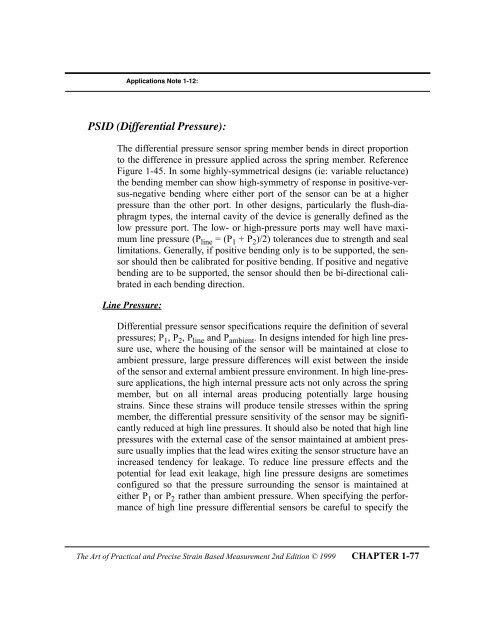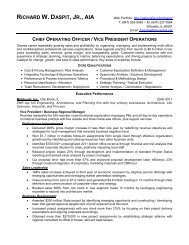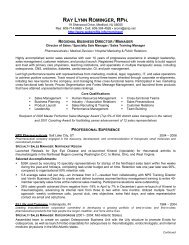The Art of Practical and Precise Strain Based ... - Webprofile.info
The Art of Practical and Precise Strain Based ... - Webprofile.info
The Art of Practical and Precise Strain Based ... - Webprofile.info
- No tags were found...
You also want an ePaper? Increase the reach of your titles
YUMPU automatically turns print PDFs into web optimized ePapers that Google loves.
Applications Note 1-12:PSID (Differential Pressure):<strong>The</strong> differential pressure sensor spring member bends in direct proportionto the difference in pressure applied across the spring member. ReferenceFigure 1-45. In some highly-symmetrical designs (ie: variable reluctance)the bending member can show high-symmetry <strong>of</strong> response in positive-versus-negativebending where either port <strong>of</strong> the sensor can be at a higherpressure than the other port. In other designs, particularly the flush-diaphragmtypes, the internal cavity <strong>of</strong> the device is generally defined as thelow pressure port. <strong>The</strong> low- or high-pressure ports may well have maximumline pressure (P line = (P 1 + P 2 )/2) tolerances due to strength <strong>and</strong> seallimitations. Generally, if positive bending only is to be supported, the sensorshould then be calibrated for positive bending. If positive <strong>and</strong> negativebending are to be supported, the sensor should then be bi-directional calibratedin each bending direction.Line Pressure:Differential pressure sensor specifications require the definition <strong>of</strong> severalpressures; P 1 , P 2 , P line <strong>and</strong> P ambient . In designs intended for high line pressureuse, where the housing <strong>of</strong> the sensor will be maintained at close toambient pressure, large pressure differences will exist between the inside<strong>of</strong> the sensor <strong>and</strong> external ambient pressure environment. In high line-pressureapplications, the high internal pressure acts not only across the springmember, but on all internal areas producing potentially large housingstrains. Since these strains will produce tensile stresses within the springmember, the differential pressure sensitivity <strong>of</strong> the sensor may be significantlyreduced at high line pressures. It should also be noted that high linepressures with the external case <strong>of</strong> the sensor maintained at ambient pressureusually implies that the lead wires exiting the sensor structure have anincreased tendency for leakage. To reduce line pressure effects <strong>and</strong> thepotential for lead exit leakage, high line pressure designs are sometimesconfigured so that the pressure surrounding the sensor is maintained ateither P 1 or P 2 rather than ambient pressure. When specifying the performance<strong>of</strong> high line pressure differential sensors be careful to specify the<strong>The</strong> <strong>Art</strong> <strong>of</strong> <strong>Practical</strong> <strong>and</strong> <strong>Precise</strong> <strong>Strain</strong> <strong>Based</strong> Measurement 2nd Edition © 1999 CHAPTER 1-77
















